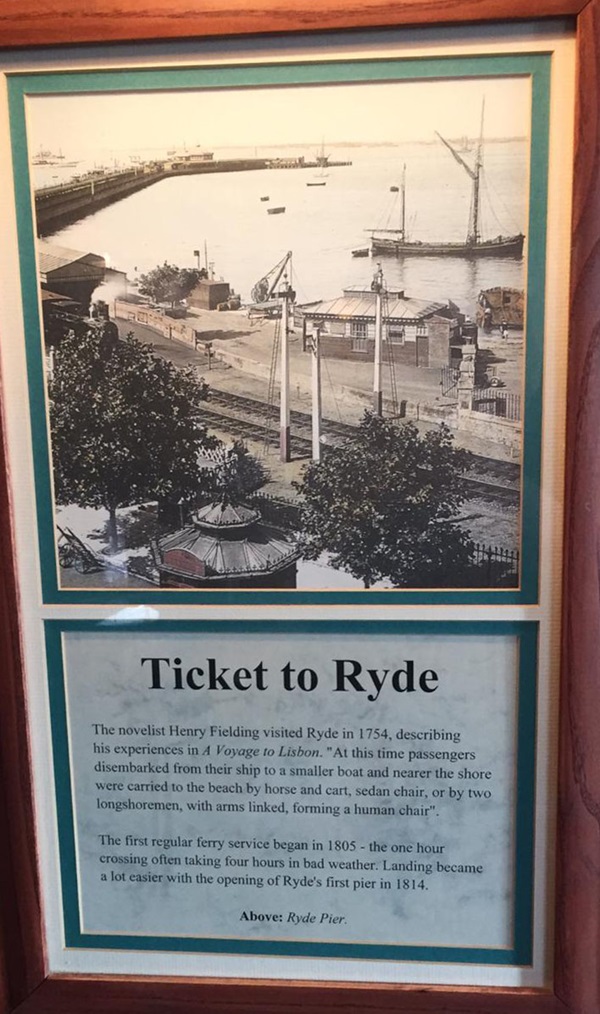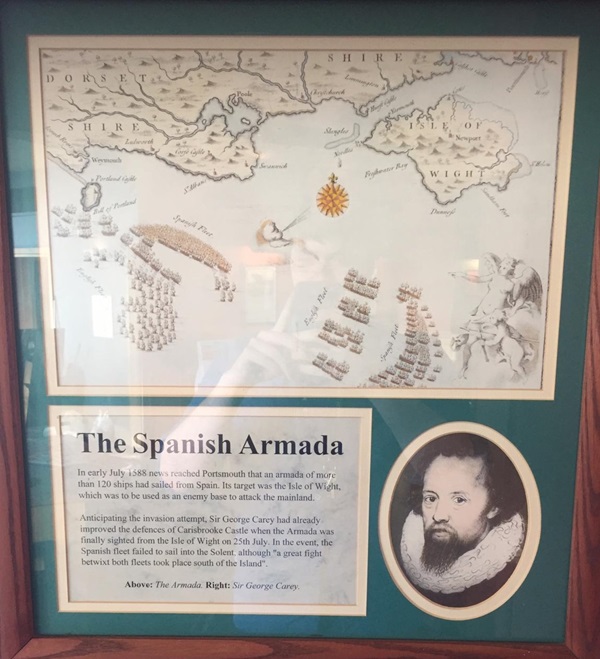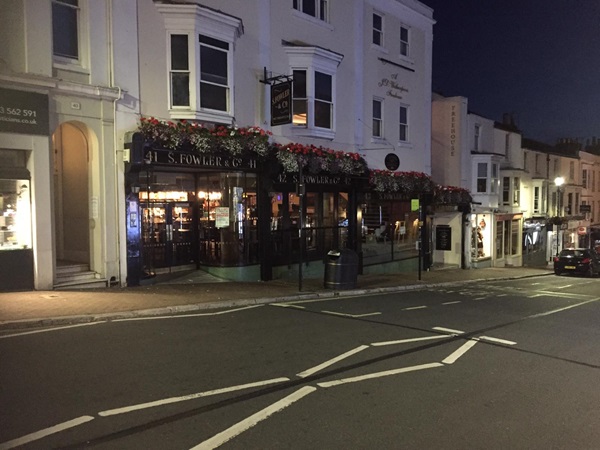41–43 Union Street, Ryde, Isle of Wight, PO33 2LF
This pub is the former Fowlers department store – a familiar landmark for more than a century.
A photograph and text about Ryde Pier.

The text reads: The novelist Henry Fielding visited Ryde in 1754, describing his experiences in A Voyage to Lisbon. “At this time passengers disembarked from their ship to a smaller boat and nearer the shore were carried to the beach by horse and cart, sedan chair, or by two longshoremen, with arms linked, forming a human chair.”
The first regular ferry service began in 1805 – the one hour crossing often taking four hours in bad weather. Landing became a lot easier with the opening of Ryde’s first pier in 1814.
Prints and text about the Spanish Armada.

The text reads: In early July 1588 news reached Portsmouth that an armada of more than 120 ships had sailed from Spain. Its target was the Isle of Wight, which was to be used as an enemy base to attack mainland.
Anticipating the invasion attempt, Sir George Carey had already improved the defences of Carisbrooke Castle when the armada was finally sighted from the Isle of Wight on 25 July. In the event, the Spanish fleet failed to sail into the Solent, although “a great fight betwixt both fleets took place south of the island”.
A photograph and text about the Schneider Trophy Race.

The text reads: For many years the Schneider Trophy Race was held over the Solent – the starting and finishing line being Ryde pier. Founded for seaplanes in 1912, this speed race was staged until 1933, acquiring quite a following in its day. The planes were more-or-less experimental. Those designed for Supermarine by RJ Mitchell were the ancestors of his famous spitfire, which played such an important role in saving Britain from defeat during the Second World War.
External photograph of the building – main entrance.

If you have information on the history of this pub, then we’d like you to share it with us. Please e-mail all information to: pubhistories@jdwetherspoon.co.uk